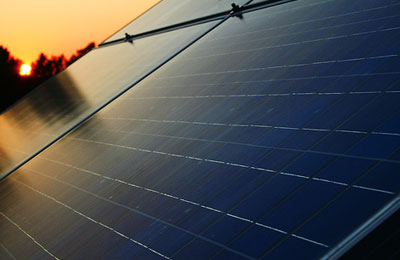
Saudi, UAE top Mena cleantech markets
Dubai, November 13, 2013
Saudi Arabia and the UAE topped the list of the most attractive markets in Mena for Cleantech, a report said, adding that Qatar, Jordan, Morocco and Egypt also showed significant potential.
Solar power had the highest potential for growth across the region compared to other types of renewable energy, according to the 2013 Mena Cleantech Survey 2013 conducted professional services firm EY in collaboration with the Clean Energy Business Council (CEBC) and Middle East Solar Industry Association (MESIA).
The survey respondents comprised of more than 150 executives from varied industries such as banking, utilities, manufacturing, project development, the public sector, academia and NGOs.
Nimer Abu-Ali, Mena cleantech leader, EY, said: “Saudi Arabia and the UAE have large financial resources at their disposal for renewable investments. Although financing is a necessary resource to develop renewable energy, other aspects play a part in market attractiveness such as market size and socio-political conditions.”
Saudi Arabia is expected to be the most attractive market for the next decade because of its ambitious plans and the abundance of financial resources available to King Abdullah City for Atomic and Renewable Energy (KACARE). The UAE is second on the list of attractive markets, mainly due to the long term renewables strategies of Abu Dhabi and Dubai.
Mena cleantech plans
Saudi Arabia plans to derive 10 per cent of its electricity from the sun by 2020 and up to 25 per cent by 2032. The country could conceivably become one of the heaviest users of solar energy in the world. Saudi Arabia recently launched a white paper by the King Abdullah City for Atomic and Renewable Energy (KA CARE) on its renewable procurement program.
It aims to be one of the largest sustained efforts of its kind globally, with 41 gigawatts (GW) of solar capacity to be installed by 2030.
In the UAE, Dubai has completed the first 13 megawatt (MW) phase of a 1,000 MW solar park, which is part of the plan to generate 5 per cent of electricity through solar energy by 2030.
Abu Dhabi based Masdar has taken the 100 MW Shams 1 project live, which is the largest concentrated solar power (CSP) project in the Mena region. The Emirate is also working on various other projects as part of the plan to generate 7 per cent of its electricity needs with renewables by 2020.
As part of the Qatar National Vision 2030, Qatar has announced its first photovoltaic plant with a capacity of 150-200 MW with an objective of generating 20 per cent of its energy from renewable sources by 2030 and 1,800 MW of renewable capacity by 2020.
Oman Power and Water Procurement Co (OPWP) has identified the potential for a 20-MW wind farm in the South Western region of Oman's Dhofar Governorate as part of a study on the Sultanate's wind power resource.
Morocco aims for renewables to account for 42 per cent of the generation mix by 2020. The power purchase agreement for the 160 MW Ouarzazate CSP plant was signed in November 2012, and construction started in May. In August, seven consortia were shortlisted for the next 300 MW of CSP capacity. The country currently also has over 700 MW of wind capacity installed and over 1,000 MW under construction or in planning.
Cleantech technologies
Energy efficiency remains the top priority after solar energy as the cost of energy is still increasing across Mena. In the GCC, energy efficiency, green building and water are particularly important areas due to climatic conditions, high energy consumption per capita, lack of fresh water resources and the link between water and energy through desalination. Wind energy is the second priority in North Africa following solar power due to the huge potential.
According to the survey respondents, solar energy has the highest potential for growth across Mena.
“People now have more confidence in solar energy across Mena. Although most of the solar projects in Mena have applied photovoltaic (PV) technology, the respondents still believe Concentrated Solar Power (CSP) is an equally attractive technology,” said Abu-Ali.
“For the solar market in the Middle East to truly take place, we will need to see strong leadership from the key stakeholders within each of the key markets, notably: Saudi Arabia, Morocco, the UAE, Kuwait, Jordan and Qatar.”
Mena challenges
Respondents still believe that the lack of governmental support and inadequate policy frameworks are key challenges for attracting the private sector to Mena.
Even though the cost of renewables has been decreasing, 24 per cent still view the relatively high cost of technology as a major obstacle to the implementation of renewable energy.
Sixteen per cent also cite fossil-based energy subsidies as an obstacle for renewable energy development, particularly in the GCC countries which heavily subsidize fossil fuel energy for all sectors of the economy.
“Governments in Mena have recognized that the long term sustainability of their economies and their resources can be improved by using alternative energies and investing in energy efficiency,” Abu-Ali pointed out.
“With large procurement programs starting up, the first showcase plants coming online, and government policies being implemented, local investors are starting to find attractive investment opportunities in renewables.” – TradeArabia News Service







